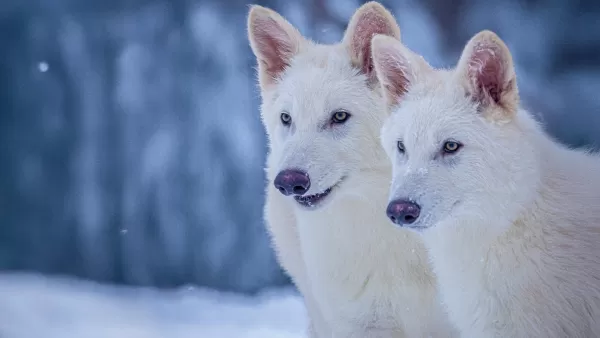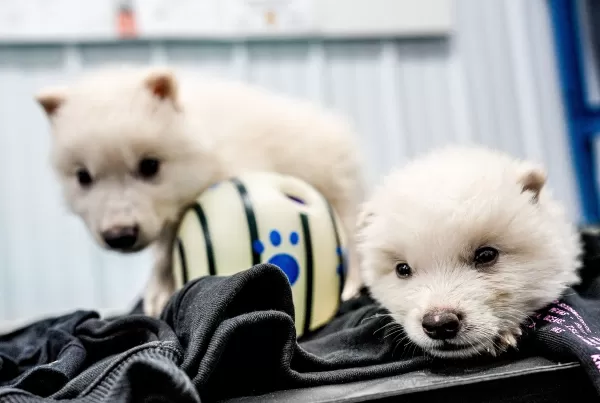Rockstar Games unveiled the second trailer for Grand Theft Auto VI, captured entirely on a PlayStation 5, fueling excitement and debate among fans. Dive into the details of the trailer's presentation
Author: IsabellaReading:1
Bringing a super-sized canine back from extinction after 12,500 years sounds like the plot of a thrilling movie filled with dramatic special effects, but it's become a reality thanks to the efforts of the biotech company Colossal Biosciences. Using DNA from the common gray wolf, advanced gene-editing techniques, and domestic dog surrogates, they've successfully brought three dire wolves into existence. Named Romulus, Remus, and their younger sister Khaleesi, these majestic creatures now reside in a secret, expansive 2,000+ acre preserve in the US, cared for by a dedicated team.
 Romulus and Remus at three months old
Romulus and Remus at three months old
The visionaries at Colossal Biosciences, led by CEO Ben Lamm, have achieved what many thought was the stuff of science fiction. "I could not be more proud of the team. This massive milestone is the first of many coming examples demonstrating that our end-to-end de-extinction technology stack works," Lamm stated. The team extracted DNA from a 13,000-year-old tooth and a 72,000-year-old skull to create these healthy dire wolf puppies, showcasing the potential of biotechnology in conservation efforts.
 Romulus and Remus at one month old
Romulus and Remus at one month old
Colossal Biosciences is no stranger to making headlines; they previously engineered a Colossal Woolly Mouse, designed to mimic the mammoth's phenotype. Critics, however, argue that the dire wolves are essentially normal wolves in elaborate costumes, suggesting that the remaining dire wolf DNA may not suffice for true genetic cloning.
The company's mission extends beyond creating viral sensations and owning extraordinary pets. Colossal Biosciences aims to leverage their findings to aid in the preservation of current species for future generations. Dr. Christopher Mason, a scientific advisor and member of the board of observers for Colossal, emphasized the broader implications of their work: "The de-extinction of the dire wolf and an end-to-end system for de-extinction is transformative and heralds an entirely new era of human stewardship of life."
He further explained that the technologies developed for the dire wolves could be pivotal in saving other endangered species, marking a significant advancement in genetic engineering for both scientific research and conservation efforts. "This is an extraordinary technological leap in genetic engineering efforts for both science and for conservation as well as preservation of life, and a wonderful example of the power of biotechnology to protect species, both extant and extinct," Mason added.
In collaboration with the American Humane Society and the USDA, Colossal Biosciences ensures that Romulus, Remus, and Khaleesi are well cared for in their expansive preserve, highlighting their commitment to the welfare of these remarkable creatures.
 LATEST ARTICLES
LATEST ARTICLES